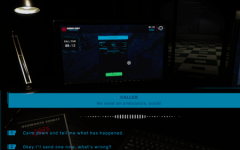Advertisement
Voyager-19
Advertisement

Voyager-19 isn’t about exploration in the traditional sense. There are no alien civilizations, no galaxy maps. This is about drifting into the abyss and trying to maintain control over a probe that’s far past its expiration date. Your mission was finished years ago. But you’re still receiving power. You’re still receiving coordinates.
And someone—or something—is still out there, trying to reach you.
Control is an Illusion
At the start, the interface feels familiar: systems monitoring, signal decoding, course adjustments. But as you move forward, cracks appear. A fuel gauge resets to zero, then jumps back. A log file replays out of order. You patch one system, and another fails. You begin to realize: the problem isn’t mechanical. It’s existential.
Voyager-19 is a story told through static, error codes, and eerie silences. The UI becomes your diary. The ship, your failing body.
The Beauty of Losing Contact
There’s something hauntingly beautiful about playing a machine that no one is waiting for. You orbit moons no one will ever see. You collect data no one will ever read. And still, you continue. Not because you were programmed to—but because some part of you wants to.
The universe stretches on in all directions. Stars blink and die. And you keep flying, one fading signal at a time.
Find Meaning in the Static
Eventually, patterns begin to emerge. Unlabeled waypoints. Audio logs distorted beyond repair. Flickers of light in systems marked as dead. You start asking questions the game won’t answer. Are you being led? Or are you simply interpreting noise as meaning?
That’s the magic of Voyager-19—it never tells you what it is. It lets you decide. And the answer might change every time you boot it up.






















































































































































